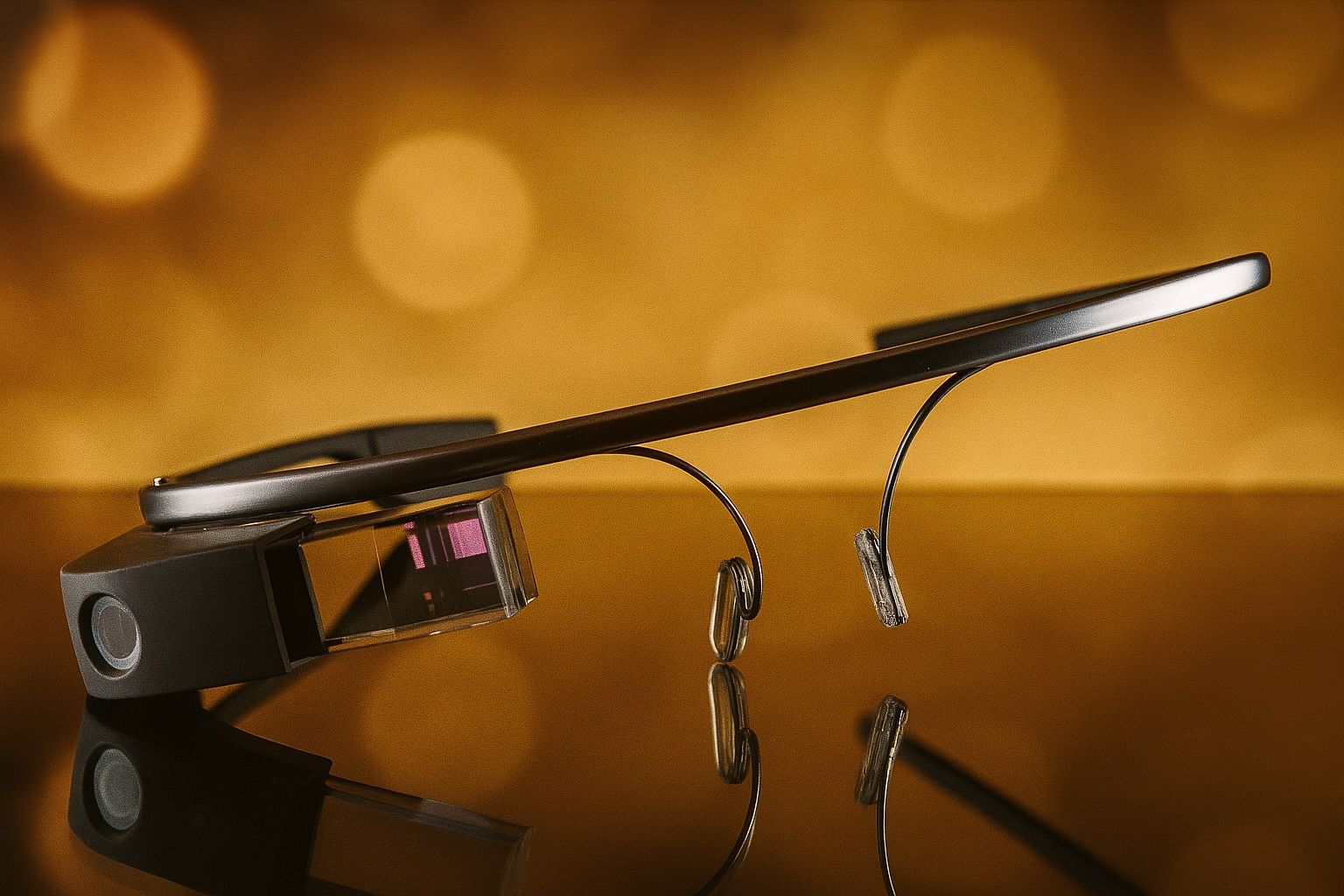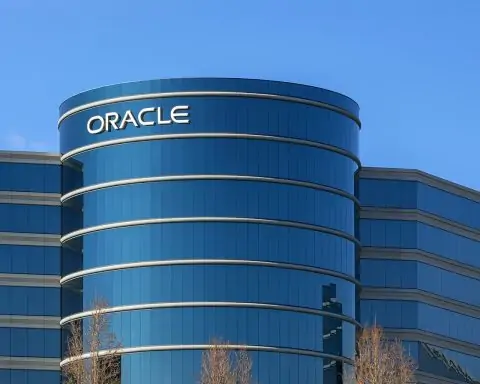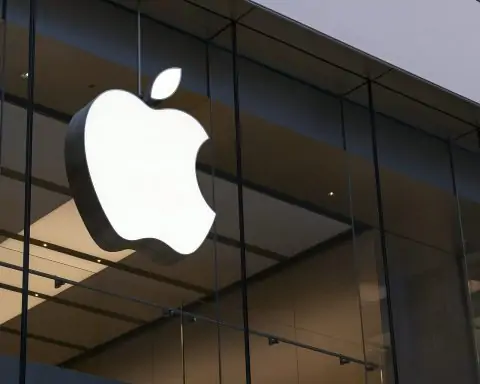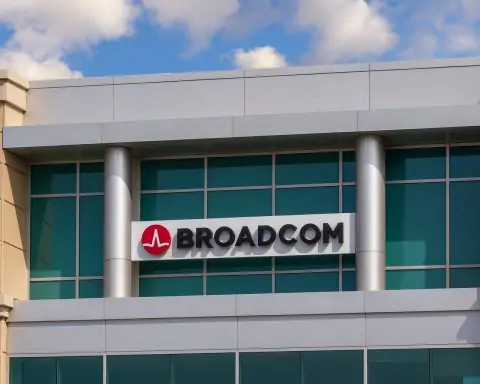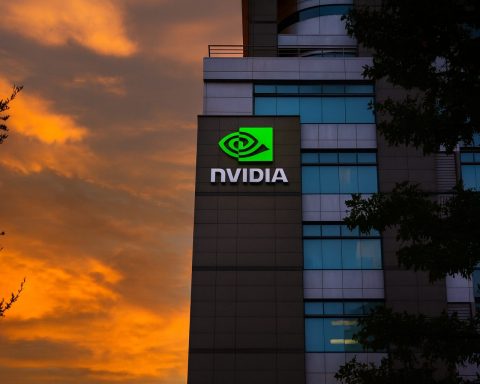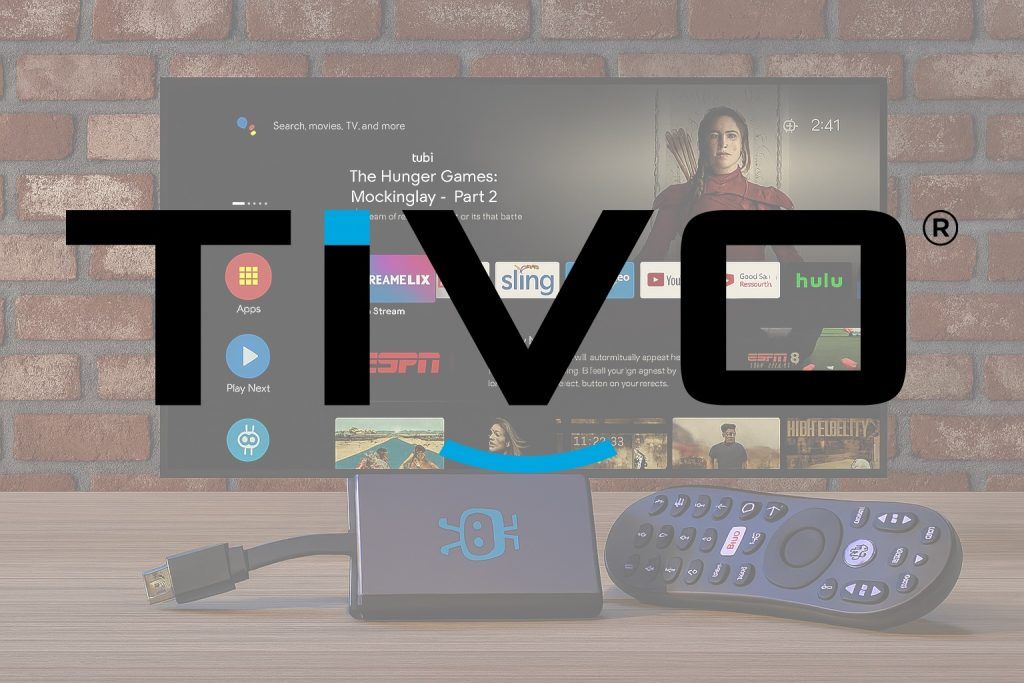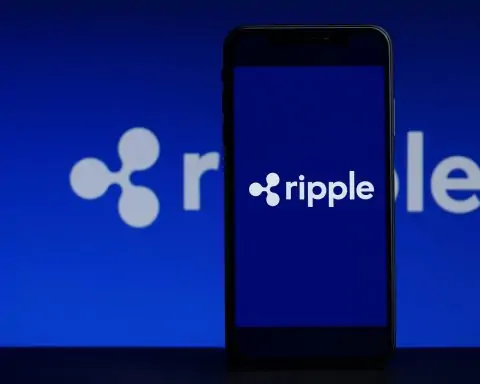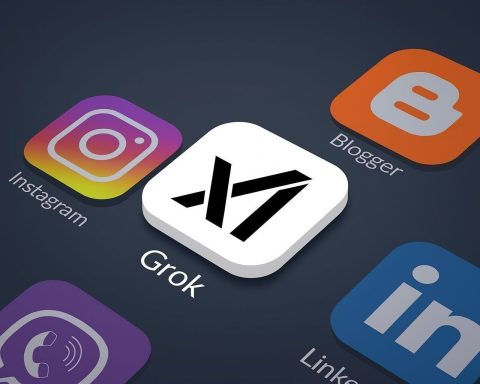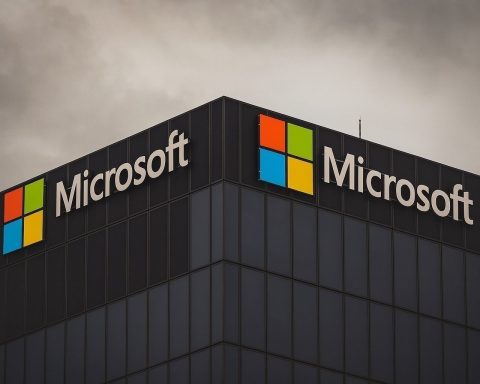- Google started Project Glass at Google X around 2011, officially announced in April 2012, with a dramatic June 2012 I/O live demo.
- Time magazine named Google Glass its Invention of the Year in 2012.
- The first Explorer Edition shipments began in April 2013, priced at $1,500.
- Explorer Edition hardware included a 640×360 display (perceived as a 25-inch screen at 8 feet), 5 MP photos, 720p video, bone-conduction audio, 16 GB storage (12 GB usable), 2 GB RAM, a dual-core TI OMAP processor, and a weight of 36 grams.
- Public reaction shifted to privacy concerns and the ‘Glasshole’ stigma, with bans at bars and other public venues.
- Google announced on January 15, 2015 that it would stop producing consumer Google Glass, effectively shelving the prototype.
- April 2014 marked the launch of Glass at Work, a program to promote enterprise use with pilots by Boeing and GE.
- July 2017 Google publicly unveiled Glass Enterprise Edition, with hardware improvements like longer battery life and safer attachment to safety frames after testing with dozens of enterprises.
- May 2019 Google released Glass Enterprise Edition 2, built on Qualcomm’s Snapdragon XR1, featuring an 8 MP camera, USB-C fast charging, Android Oreo, and a price around $999.
- March 15, 2023 Google discontinued Glass Enterprise Edition sales and by September 2023 support ended, with Project Iris canceled in 2023 and Google pivoting to an Android XR platform licensed to partners.
Comprehensive Overview of Google Glass: Past, Present, and Future
Google Glass burst onto the scene as a futuristic wearable that promised to bring augmented reality to everyday life. First unveiled by Google in the early 2010s, these high-tech smartglasses were hailed as a bold leap into a sci-fi future – wearable tech that could seamlessly stream information into your field of vision. Yet, just as quickly, Glass became mired in controversy and even mockery (earning wearers the nickname “Glassholes”). Fast forward to 2025, and the story of Google Glass is a rollercoaster of hype, backlash, rebirth, and an unexpected second life. In this report, we’ll delve into the captivating journey of Google Glass – from its ambitious origins and technical innovations, through public blowback over privacy, to its pivot toward enterprise use – and see how it stacks up against today’s newest AR darlings like Apple’s Vision Pro and Microsoft’s HoloLens.
Historical Overview: Rise and Fall of an Ambitious Vision
Google Glass began as Project Glass at Google’s secretive X lab around 2011, driven by the vision of co-founder Sergey Brin and others to create a “ubiquitous computer” in eyewear form [1]. The concept was officially announced in April 2012, accompanied by a viral concept video (“One Day…”) portraying a day-in-the-life with AR glasses [2]. Google ramped up the excitement with a dramatic live demo at its June 2012 I/O conference: skydivers wearing Glass leapt from a blimp and live-streamed their descent to a dazzled audience [3]. By the end of 2012, Time magazine had named Google Glass its “Invention of the Year” and even fashion designers featured Glass on the runway [4] [5].
In early 2013, Google invited tech enthusiasts to become “Glass Explorers.” Despite the hefty $1,500 price tag, thousands vied for early access via the #ifihadglass contest [6]. The first Explorer Edition units shipped in April 2013 to these lucky early adopters [7]. Enthusiasm was high: everyone from Prince Charles to Beyoncé was spotted trying on Glass [8], and early users gleefully tested features like taking hands-free photos, getting turn-by-turn directions, and reading texts in their eyeline. Google even partnered with Luxottica and fashion icons like Diane von Fürstenberg to make Glass look chic [9].
Initial Hype Turns to Disillusionment: It didn’t take long, however, for cracks to appear. The Explorer Edition was very much a beta product – sometimes buggy and prone to crashes [10]. Users complained of short battery life and even headaches or eye strain from the tiny display [11] [12]. More critically, it wasn’t clear to mainstream consumers what problem Glass really solved. As Wired’s Steven Levy later noted, Google had “failed to understand who could use it best and what it should be doing” [13] – in other words, they pushed a technology without a killer app. By late 2013 into 2014, public sentiment began shifting. The $1,500 device and exclusive “Explorer” clubs made Glass seem like a status symbol of tech elites, creating a divide between the tech “haves” and “have-nots” [14]. Even one of Google X’s leaders, Sebastian Thrun, reflected that wearing Glass made him “a reference point of wealth” – he was “celebrated like a rock star” just for donning the gadget, a reaction he found unsettling [15].
By 2014, despite a public launch attempt (one day Glass was briefly put on sale to general consumers), it was clear the product wasn’t catching on. On January 15, 2015, Google announced it would stop producing the consumer Google Glass [16]. The ambitious prototype was effectively shelved – “going dark,” as insiders put it [17] – ending the initial chapter of Glass with a whimper. Tech pundits proclaimed Google Glass dead. (Google, for its part, coyly noted “the journey doesn’t end here” as it closed the Explorer program [18].)
Technical Specs and Innovations of Google Glass
Despite its troubles, Google Glass introduced some impressive innovations in wearable computing. At a high level, Glass was a lightweight pair of eyeglasses frames with an optical display prism above the right eye, containing the guts of a smartphone-like computer. Key technical specifications and features of the Explorer Edition (2013) included:
- Display: A tiny projector that beams into a prism lens, equivalent to viewing a 25-inch HD screen from 8 feet away [19] (the display resolution was effectively about 640×360 pixels).
- Camera: 5 megapixel still photos and 720p HD video recording [20] – allowing wearers to capture photos or video hands-free from a first-person perspective. (A tiny green LED illuminated when recording in later versions as a nod to privacy concerns [21].)
- Audio: A novel bone-conduction transducer that transmitted sound through your skull bones to the inner ear [22]. This meant you could hear Glass’s audio (phone calls, Google Assistant, etc.) without earbuds – and people next to you wouldn’t hear it.
- Connectivity & Sensors: Built-in Wi-Fi (802.11b/g) and Bluetooth for connecting to your smartphone, plus sensors like an accelerometer, gyroscope, magnetometer (compass), ambient light sensor, and proximity sensor [23]. These enabled head-motion tracking and context awareness.
- Controls & Interface: Glass ran “Glass OS” (based on Android) [24] and was operated via voice commands (“OK Glass…take a picture”) and a touchpad on the side of the frame for swiping through its timeline-like interface. There was also a companion MyGlass smartphone app for GPS and SMS integration [25].
- Hardware: A dual-core TI OMAP processor with 2GB RAM powered the unit [26]. It had 16GB of flash storage (12GB usable) for apps and media [27]. The battery was rated for “one day of typical use,” though heavy activities like video streaming could drain it much faster [28]. Total weight: a mere 36 grams (1.3 oz) [29] – quite light.
At the time, jamming all this tech into a small wearable was a remarkable feat. Reviewers marveled at how futuristic it felt to have a floating display for notifications and maps, all controlled by voice. Glass pioneered the concept of mainstream smart glasses and spurred others to explore heads-up displays. However, its limitations (short battery life, limited apps, a low-res display) underscored that the tech was not fully ready for seamless AR. As Babak Parviz, the Google X engineer who led the Glass project, later admitted: “I was always excited about augmented reality… but very quickly it became clear that the state of the technology was not there for us to do it.” [30] In essence, Glass could only overlay simple text and photos – true 3D “holographic” AR was beyond its early-2010s hardware.
Public Reception and Privacy Controversies
For all its innovative tech, Google Glass arguably became more famous for the public backlash it sparked. Initial curiosity turned into widespread concern – even hostility – over how Glass might infringe on privacy and social norms. Because Glass’s built-in camera was often pointed forward (potentially recording), many people felt uneasy around Glass wearers. As one tech writer quipped in mid-2013, “to hear some people tell it, Google Glass is leading us down a path toward a world where every citizen is a walking, hidden spy” quietly recording everything [31] [32]. The fear was that Glass wearers could film or photograph others without consent – in bars, meetings, or on the street – creating an Orwellian scenario of constant surveillance.
These privacy worries were not entirely unfounded. Glass had no obvious recording light in its first iteration, and non-users had no easy way to know if they were being filmed. The phrase “Glasshole” quickly entered the lexicon to describe Glass users perceived as ignoring social etiquette in favor of gadgetry [33]. A satirical Tumblr blog called “White Men Wearing Google Glass” popped up to poke fun at the tech bros sporting the device [34]. Comedians and TV shows made Glass the butt of jokes. The public image of Glass and its users went from cool to creepy.
By 2013–2014, numerous establishments preemptively banned Google Glass on their premises. Signs reading “NO GOOGLE GLASS” went up at certain bars, restaurants, movie theaters, casinos, and even strip clubs across the U.S. over privacy concerns [35]. (The thought of someone recording video in a locker room or at a poker table, for instance, set off alarm bells.) In one widely reported incident, a woman in a San Francisco bar had her Glass ripped off and was physically attacked by patrons who felt she was recording them – an extreme example of the visceral reactions the device provoked. Even Google itself banned Glass from some internal meetings and its 2013 shareholders’ meeting, not wanting anyone secretly live-streaming proceedings [36].
Privacy advocates and regulators also weighed in. In 2013, a group of U.S. Congress members sent Google a formal letter demanding answers on how Glass would respect privacy (e.g. would it do facial recognition? how would data be stored?) [37]. Canada’s privacy commissioner sent a similar inquiry [38]. Consumer Watchdog, a privacy watchdog group, blasted Glass as “one of the most privacy invasive devices ever” and demanded Google create opt-outs so people could block Glass recordings [39]. In short, a privacy panic swirled around Glass, arguably stunting any chance of societal acceptance.
Apart from privacy, there were other public perception issues. Glass’s high price and limited availability fostered a view that it was a toy for the rich or geeky, not the average person. The term “Glasshole” also captured the social awkwardness Glass wearers experienced – many folks just found it rude or weird to talk to someone wearing a computer on their face that could be reading emails or filming you. This social stigma became a punchline that Google couldn’t overcome. By the end of 2014, the narrative around Google Glass had shifted from cutting-edge wonder to cautionary tale. As one writer later remarked, the project became “a carnival of failure” – a case study in how not to introduce a new technology to the public [40].
Pivot to Enterprise: From Shaky Consumer Gadget to Workplace Tool
Stung by the consumer flop, Google wasn’t ready to completely give up on Glass. Instead, it pivoted the device towards a niche where it showed real promise: enterprise and industrial users. This shift began quietly even before the consumer version was fully dead. Google noticed that some early adopters had started experimenting with Glass for on-the-job applications – surgeons used it to live-stream operations for teaching; factory workers tried it for hands-free instructions; field technicians found it useful for viewing schematics while repairing equipment [41] [42]. In these professional settings, many of the consumer objections didn’t apply: privacy was less of an issue on a closed factory floor or hospital, and the utility (hands-free access to information) was immediately apparent.
As Astro Teller, head of Google X, later explained, “When we originally built Glass, …the Explorer program was the right thing to do to learn… Where we got a little off track was trying to jump all the way to consumer applications.” [43] Google’s mistake was aiming for the mass market too soon, rather than first nailing a use-case that truly added value. So the company hit reset. In early 2015, Google announced that the Glass project was “graduating” from the X lab and put Tony Fadell (the Nest thermostat guru) in charge of a redesign focused on real-world practicality [44]. As Google’s then-executive chairman Eric Schmidt insisted, “We ended the Explorer program… which isn’t true [that we cancelled Glass]. Google is about taking risks and there’s nothing about adjusting Glass that suggests we’re ending it.” He added that Glass remained a “big and very fundamental platform for Google”, just one that would take years to get right [45]. In other words, Glass wasn’t dead – it was regrouping.
Timeline of the Enterprise Pivot:
- April 2014: Google launches a “Glass at Work” partner program, recognizing and supporting startups adapting Glass for business uses [46]. Enterprises like Boeing and GE start piloting Glass for tasks like assembly guidance and warehouse picking.
- January 2015: The Explorer Edition consumer sales halt. Behind the scenes, Google begins work on a stealth Enterprise Edition (EE). Select partner companies quietly receive updated Glass units tailored for workplace use later that year [47] [48]. Google even asked these early enterprise customers to keep it secret – any public photos had to show the old Explorer model to avoid media attention [49].
- July 2017: Google finally publicly unveils Glass Enterprise Edition. The company reveals that over the past two years, it had been testing Glass with dozens of enterprises – from manufacturing giants like GE, Volkswagen, and Boeing to healthcare organizations [50]. The Enterprise Edition hardware was improved (longer battery, more comfortable, etc.) and could clip onto safety glasses frames for industrial use. “Glass is back,” announced one headline, describing this “startling second act” in factories and warehouses [51] [52].
- May 2019: Google releases Glass Enterprise Edition 2, a refined model built on Qualcomm’s Snapdragon XR1 platform with significantly more power and battery life [53] [54]. It featured an 8 MP camera (up from 5 MP) and USB-C fast charging, and ran on Android Oreo for easier app development [55]. Google also moved the Glass team out of X (the research lab) and into Google’s main Devices group, signaling commitment to it as a real product line [56]. The price was roughly $999, and it was sold through specialized solution providers.
- March 2023: Google discontinues Glass Enterprise Edition sales, effective March 15, 2023 [57]. An official notice thanked customers “for over a decade of innovation”, but stated no new units would be sold and support would end in September 2023 [58] [59]. This marked the second shutdown of the Glass project – albeit after a much longer run in the business realm than it ever had with consumers.
Why did Glass thrive more in enterprise? The reasons were clear. In industrial and medical environments, Glass solved real problems: it kept workers’ hands free while accessing information, it could improve accuracy and safety by guiding tasks, and it saved time by eliminating constant referencing of paper manuals or laptops. The public’s fear of being surreptitiously recorded was largely moot on a factory line or in an operating room. As Jay Kothari, the Glass project lead, said in 2017, “We talked to all of our Explorers and we realized that the enterprise space had a lot of legs.” Companies were organically finding value in Glass, even if Google hadn’t initially targeted them [60].
Indeed, when announcing the revival for enterprise, Kothari emphasized: “This isn’t an experiment… Now we are in full-on production with our customers and partners.” [61] The focus had shifted 100% to practical workplace use cases – no more talk of trendy consumer lifestyle applications. As the CEO of Upskill (a leading Glass software partner) observed about the rebooted hardware: “It looks very similar to the original Glass but improves on every aspect of it… They saw how we were using it and rethought everything – how you charge it, fold it up, prevent sweating, Wi-Fi coverage” [62]. In short, Google listened to enterprise users to fix pain points and make Glass a robust tool rather than a geeky toy.
Enterprise Applications: Successes and Challenges
Once freed from the glare of the public spotlight, Google Glass found a second life as an enterprise productivity device. Over the last several years, businesses in various sectors adopted Glass (often via Google’s solution partners) and reported impressive gains. Here are a few examples of how Glass has been used on the job:
- Manufacturing & Assembly: Companies like AGCO (a farming equipment manufacturer) deployed Glass to assembly-line workers, who wear it to view digital checklists, instructions, and reference materials for customized tractor builds. Instead of walking back and forth to a fixed computer terminal, workers get step-by-step instructions in their field of view, and can mark steps complete with a simple voice command (“OK Glass, proceed”). The results were striking: AGCO found assembly times improved and even discovered Glass could cut training time for new workers from 10 days to just 3 days [63]. Quality control improved too, since Glass can alert if a wrong part is being used or prompt for a photo if something looks off [64] [65]. GE Aviation similarly saw worker productivity jump by 8–12% in wiring harness assembly when using smart glasses, according to a Harvard Business Review study [66]. These gains translate to substantial cost savings in large operations.
- Logistics & Warehousing: Global shippers like DHL equipped warehouse pickers with Glass to streamline order fulfillment. Instead of carrying paper pick lists or handheld scanners, staff received visual cues through Glass on where an item is located and how to navigate the warehouse. DHL reported faster picking rates and fewer errors, as workers weren’t constantly looking down at clipboards – they could scan items with Glass’s camera and move on. Back in 2017, DHL publicly touted double-digit productivity increases in pilot programs using Glass and indicated it would expand the solution [67].
- Healthcare: In medicine, Glass found a niche with applications like surgical guidance and patient care documentation. For example, doctors at Dignity Health and Sutter Health used Glass paired with the Augmedix service to act as a remote scribe during patient exams. As a doctor talks to a patient, Glass can securely live-stream the visit to an offsite scribe who documents the interaction in the electronic health record – allowing the doctor to focus on the patient instead of typing notes. This re-humanizes the visit and saves physicians hours of charting paperwork each day [68] [69]. Surgeons have also worn Glass to consult patient data or medical images in their peripheral vision while operating, or to broadcast their viewpoint to medical students remotely. In one case, a doctor even used Glass to live-stream an entire surgery to colleagues – a novel form of telemedicine training.
- Field Service & Training: Oilfield and utility companies tried Glass for field engineers and technicians. Rather than lugging manuals, a technician could see wiring diagrams or step-by-step repair instructions floating in view. They could also call an expert and show them the problem through Glass’s camera (“see what I see” support). New hires got up to speed faster by following interactive tutorials on Glass. Boeing, for instance, used Glass for aircraft wiring assembly and saw a 25% reduction in task time and fewer mistakes, by overlaying wiring schematics in workers’ view and guiding them through complex assemblies [70] [71].
These examples illustrate the key advantage of Glass in enterprise: it delivers information at the moment and place it’s needed without requiring users to look away from their work. In settings where seconds count or hands must remain busy, that’s invaluable. A 2017 Forrester Research report even predicted that by 2025, 14.4 million U.S. workers would be using smart glasses on the job – a sign that industry analysts saw this as a burgeoning trend (and indeed, here in 2025, millions of smart glasses and AR headsets are in workplaces from factories to warehouses).
However, the enterprise journey hasn’t been without challenges. Some hurdles and lessons learned include:
- Ergonomics and Comfort: Early feedback noted that wearing Glass for an 8-hour shift could be uncomfortable. The Enterprise Edition addressed some issues (e.g. better weight balance, sweat resistance, and the ability to attach to custom-fit safety frames) [72]. Still, any head-worn device must be light and comfy or workers won’t tolerate it long-term. This is a continuous improvement area.
- Worker Acceptance: Not every worker immediately embraced having an AR device as part of their routine. There was initial skepticism, especially among veteran employees used to traditional methods [73] [74]. Some worried about feeling surveilled by the device (even on the factory floor, privacy conversations occurred – one factory considered a “bathroom bar” for people to hang up their Glass headsets before going into restrooms, just in case [75]). Over time, as Glass proved its usefulness and became “required” like any other tool, most skepticism subsided. Many workers became advocates once they realized it made their jobs easier – some even demanded expansion of the program after trying it [76].
- Software Ecosystem: Google’s strategy relied on third-party solution partners (like Upskill, Proceedix, etc.) to build custom Glass apps for each enterprise scenario [77] [78]. This was effective but meant companies often needed to invest in custom software development or integration with their systems. For smaller firms without resources or strong IT support, that could be a barrier. Over time, more off-the-shelf Glass applications emerged for common use cases, and Glass EE2’s move to standard Android OS made in-house app development easier [79].
- Competition and Alternatives: In the enterprise AR space, Google Glass wasn’t alone. Competing AR headsets (like Vuzix and Epson Moverio smart glasses, or Microsoft’s HoloLens in more complex scenarios) vied for the same projects. In fact, AGCO first tested a Vuzix device and found it less sturdy than Glass [80]. Google had the advantage of a familiar brand and a polished product by EE2, but enterprise buyers naturally evaluate all options. The relatively high cost per unit (Glass EE was ~$1,300+ each [81]) also meant businesses had to justify the ROI – which worked in many cases with productivity data, but wasn’t trivial.
Despite these challenges, the trajectory of Glass in enterprise was largely positive until its quiet discontinuation in 2023. By then, it had proven that AR wearables could deliver tangible business value. In manufacturing, healthcare, logistics and more, Glass showed it could improve human performance rather than replace humans. “We’re not using this to replace workers with a robot… we’re helping them do their job better,” emphasized one manager whose company rolled out Glass [82]. This framing – AR as an assistant, not a threat – helped drive adoption and quell fears of automation.
Expert Opinions & Commentary
Over the years, Google Glass has prompted strong opinions from tech experts, futurists, and Google’s own leaders. Here we compile a few notable expert quotes and perspectives that shed light on Glass’s turbulent journey:
- Astro Teller (Head of Google X) – Candid about missteps: Reflecting on the early flop of Glass, Teller admitted the team’s technological groundwork was solid but strategy was flawed: “Starting the Explorer program was the right thing to do… Where we got a little off track was trying to jump all the way to the consumer applications.” He added wryly, “We got more than a little off track.” [83] This aligns with the now-common view that Google overhyped Glass to the public before it was truly ready or needed – a mistake even Google’s own “moonshot factory” recognized in hindsight.
- Eric Schmidt (Google’s Executive Chairman in 2015) – Glass is a long-term play: When media eulogized Glass in early 2015, Schmidt pushed back, emphasizing Google’s commitment: “Google is about taking risks and there’s nothing about adjusting Glass that suggests we’re ending it.” He insisted Glass remained a “big and very fundamental platform for Google,” likening its development to self-driving cars which also needed years to mature [84]. Schmidt was essentially saying: innovation sometimes stumbles, but that doesn’t mean the vision is dead. Indeed, Google kept iterating on Glass for 8 more years after that statement.
- Babak Parviz (Founding Glass Engineer) – Tech constraints in AR: Parviz highlighted why the original vision of full-fledged AR had to be dialed back: “I was always excited about augmented reality… [but] it became clear that the state of the technology was not there for us to do it.” [85] In other words, early Glass could only implement a subset of AR features (simple notifications and camera functions) given battery, optics, and processing limits. This realistic take explains many of Glass’s design choices (e.g. no true see-through overlay of 3D objects).
- Sebastian Thrun (Google X founder) – On social reception: Thrun noted the unintended social status that Glass conferred, contributing to its backlash: “I believe [Glass] became a reference point of wealth, of being special… I would wear it every day… I was celebrated like a rock star because of it, [which] was shocking… I’m a geek… but it had this effect on people.” [86] Thrun’s astonishment at the “rock star” treatment speaks to how Glass’s exclusivity and novelty created hype, but also resentment. When a $1,500 gizmo makes onlookers either fawn or sneer, it’s a sign of a polarization that a consumer product doesn’t want.
- Brian Ballard (CEO of Upskill, Glass software partner) – Enterprise validation: “For our market we desperately needed a product with a brand like Google behind it. Our customers don’t buy things from Kickstarter.” [87] Here Ballard underscores that large enterprises were more willing to embrace smart glasses once Google stood behind the product with a well-supported hardware platform. The credibility and stability that Google provided with Glass Enterprise Edition helped legitimize the whole industrial AR category.
- Industry Analysts (Forrester Research) – Future outlook: “By 2025, nearly 14.4 million US workers will wear smart glasses.” This bold prediction (made in 2017) suggested a massive growth of enterprise AR. While the exact number is hard to verify, the statement captured a broad optimism that Glass helped kickstart: the idea that augmented reality eyewear could become as common in workplaces as smartphones or PCs. It also presaged the wave of investment in AR devices we’re now seeing mid-decade.
- Critics and Cultural Commentators: Not all experts were bullish. Tech writers like Quinn Myers (author of “Google Glass: Remember the Internet #3”) have portrayed Glass’s saga as almost cautionary satire. Myers wrote that tearing down Glass was “fun and easy” but also necessary to humble Silicon Valley’s hubris, criticizing Google’s attempt “to reprogram the entire human race” with an unproven gadget [88]. While hyperbolic, such commentary reflects the depth of cultural discourse Glass triggered about tech’s role in society and the importance of “solving real problems instead of creating new ones” [89].
In sum, expert opinion on Google Glass spans the gamut – from Google’s unwavering faith in a new paradigm, to sober assessments of why it stumbled, to recognition of its later triumphs in enterprise, to warnings from skeptics about tech overreach. This blend of perspectives only underlines how unprecedented Glass was. Few tech products have ever been so ahead of their time that they needed to retreat and find a different path to success.
Latest News and Developments as of 2025
As of mid-2025, the Google Glass product line has once again come to a close – at least for now. Google’s March 2023 announcement ending sales of Glass Enterprise Edition 2 marked the end of official support by late 2023 [90]. While existing enterprise users can continue to use their devices (and some third-party apps still get updates), Google has signaled that it will not release new versions of Glass hardware [91] [92]. The Meet on Glass video conferencing app that Google launched in 2022 for Glass was only guaranteed to work through September 2023, highlighting the sunset of Google’s software support as well [93].
This shutdown came despite a small but solid niche of enterprise users – a fact that puzzled some observers. However, it appears Google’s strategic priorities in AR shifted. In 2023, reports emerged that Google cancelled its next-generation AR glasses project (codenamed “Project Iris”), which had been in development as a potential successor to Glass [94] [95]. The Iris prototypes – which were kept tightly under wraps – were rumored to be more advanced AR glasses meant to compete with forthcoming headsets from Meta and Apple [96]. But amid company-wide belt-tightening and layoffs in early 2023, Google shelved these plans and even saw the departure of its AR/VR chief Clay Bavor [97].
Instead, Google is now focusing on AR software platforms rather than building the hardware all on its own [98]. The company pivoted to developing a “micro XR” platform – essentially an Android-based operating system for extended reality – that it can license to other manufacturers to use in their AR/VR devices [99]. This mirrors how Google provides Android for many phone makers rather than making all the phones itself. In fact, in February 2023 Google announced a partnership with Samsung and Qualcomm to co-develop an XR (mixed reality) platform [100]. Industry insiders suggest that Google’s technology from its shelved AR glasses might reappear in a Samsung-produced mixed reality headset down the line [101]. In other words, Google may be taking a backseat on hardware but ensuring its software (Android XR and Google services) power the next wave of AR devices made by partners.
From a news perspective, 2023–2025 has seen a broader resurgence of interest in AR and VR wearables – sometimes dubbed the “spatial computing” revolution. Notably, Apple’s high-profile entry into the market with Apple Vision Pro (unveiled June 2023) grabbed headlines and reignited public imagination for head-worn devices. Ironically, many of the issues that plagued Google Glass (bulkiness, social acceptance, price) are being tackled in new ways by companies like Apple – albeit with very different product philosophies. Meanwhile, Microsoft’s HoloLens 2 (released 2019) continues to serve enterprise and military applications, and startups like Magic Leap have iterated their own AR headsets (shifting from consumer hype to enterprise focus much like Glass did).
Google itself remains in the conversation through its past contributions and ongoing R&D. The company clearly hasn’t given up on the AR dream: it acquired smart glasses startup North in 2020, has been prototyping live translation glasses (teased at Google I/O 2022), and is building the under-the-hood software that could empower many AR devices [102] [103]. In late 2023, Google even introduced an Android XR developer platform in preview, signaling to manufacturers that they can use Google’s tech to build the next generation of smart glasses and headsets [104]. So while Google Glass the product is on hiatus, Google the company is very much still in the AR/VR arena – just taking a different approach after learning some hard lessons.
For users and developers, the legacy of Google Glass lives on in various ways. Many former Glass Enterprise solution partners have shifted to other hardware (for example, offering their software on HoloLens or newer AR glasses). And some Google Glass units remain in active use on factory floors – a testament to the practical value they delivered. A community of enthusiasts and researchers also keeps tinkering with the old Explorer Editions, repurposing them for DIY projects or museum exhibits on wearable tech history.
In summary, as of 2025 the story of Google Glass remains open-ended. The device that once symbolized the future of tech is currently off the market, but its influence is everywhere – in enterprise workflows, in the design choices of newer AR devices, and in Google’s own software strategy. The concept of lightweight AR eyewear hasn’t died; it’s evolving and likely will resurface in new incarnations (perhaps even from Google again, in partnership form). If nothing else, Google Glass proved that there is something compelling about merging the digital and physical worlds via eyewear – even if figuring out how to do it right is taking the tech industry a bit longer than initially thought.
Google Glass vs. Apple Vision Pro vs. Microsoft HoloLens (How Do They Compare?)
In the years since Google Glass first debuted, several other major players have entered the augmented/mixed reality device arena. It’s interesting to compare Google Glass – with all its transformations – to two of the most notable similar technologies today: Apple’s Vision Pro and Microsoft’s HoloLens. Each represents a different approach to wearable AR. Here’s how they stack up:
- Google Glass (Enterprise Edition) – Design: Resembles a pair of lightweight glasses with a small prism display over one eye. Function: Provides a glanceable heads-up display in the wearer’s peripheral vision, suitable for notifications, short texts, images, and video streaming. It is not immersive; you still mostly see the real world, with a small screen in the corner (sometimes called “assisted reality”). Interaction: Voice commands (“OK Glass…”), touch gestures on frame, and limited head movement control. Use Cases: Initially consumer (navigation, messaging, capturing POV photos), later pivoted to enterprise tasks (work instructions, remote expert video, data capture). Hardware: Very portable (36g), but relatively low-power (comparable to an older smartphone’s capabilities). No fully enclosed optics – you’re looking through clear glasses. Strengths: Hands-free convenience, comfort, and real-world awareness. Doesn’t obstruct your face (you can make eye contact around the prism). Easy to wear for extended periods. Weaknesses: Very small screen and limited field of view for graphics; can’t project true 3D objects anchored in the environment. Lacks the wow factor of holographic visuals. Also, the original consumer version lacked a clear use case and raised privacy flags due to the always-ready camera.
- Apple Vision Pro (2024) – Design: A premium mixed reality headset that looks like a sleek pair of ski goggles. It’s much larger and heavier than Glass, covering your eyes completely. Function: Delivers immersive AR/VR experiences – it can fully occlude your view with virtual environments or blend digital elements into your view of the real room (via high-resolution passthrough video). Apple calls it a “spatial computer.” Interaction: Advanced eye-tracking, hand gestures (detected by cameras), and voice input – no controllers needed. You pinch your fingers in mid-air, gaze at UI elements, and speak commands. Use Cases: Aimed at both productivity and entertainment – e.g. having giant virtual screens for work, watching movies on a 100-ft virtual screen, interactive AR gaming, FaceTime with life-size avatars [105] [106]. It’s a consumer/prosumer device (priced at $3,499 at launch) intended for home and office use rather than all-day wear in public [107]. Hardware: Extremely powerful – dual Apple chips (M2 and R1) drive 23 million pixels across two displays (that’s more than 4K per eye!) for a crystal-clear image [108]. Dozens of sensors and cameras enable 3D mapping of your surroundings and realistic rendering. Strengths: Unmatched visual immersion and intuitive input; it can run full-blown apps and 3D content with high fidelity. Apple’s design also addresses social presence by showing a digital representation of your eyes on an outer display when people approach, mitigating the “face computer” barrier. Weaknesses: Bulk and price. It’s not lightweight or discreet – you wouldn’t walk around town with Vision Pro on; it’s meant for stationary use. Battery life is limited (~2 hours on an external pack). Also, being first-gen, it’s yet unproven how people will integrate it into daily life. Essentially, Vision Pro is more a AR/VR hybrid machine than the minimalist “glasses” approach of Google Glass.
- Microsoft HoloLens 2 (2019) – Design: A mixed reality headset that is worn like a visor, with a padded band around the head. It has a transparent visor so you can see the real world directly, with 3D holograms overlaid. No phone or PC required (self-contained like Glass and Vision Pro). Function: Projects 3D holographic images into your environment. You see virtual objects anchored to real locations – for example, a 3D model on a table that you can walk around. This is true augmented reality in the sense of spatial mapping and interaction. Interaction: Uses a combination of hand gestures (air taps, grabbing/dragging holograms), gaze targeting, and voice commands (integrated with Microsoft’s systems). Also supports connection to external controllers or clickers. Use Cases: Focused on enterprise, engineering, and military scenarios. Examples: overlaying repair instructions directly onto machinery, visualizing 3D designs at scale, remote collaboration with avatars or annotations in your space. The US Army, for instance, has tested a ruggedized version for soldier training. Microsoft has not positioned HoloLens as a consumer device (no public use due to cost ~$3,500+ and niche apps). Hardware: Significantly heavier than Glass (566g) and bulkier, but balanced with a headband. Has multiple cameras and depth sensors for environment mapping and spatial audio for realistic sound. Field of view is around 43° diagonal – much larger than Glass’s tiny prism, but still like looking through a window (not your full natural field of vision). Strengths: Truly hands-free 3D AR with no tether – you can move and the holograms stay in place relative to the real world. Great for specialized training, design, and remote assistance where visualizing data in context is helpful. More socially acceptable in enterprise settings (hardhat areas, etc.). Weaknesses: Bulk and cost make it impractical for casual or continuous wear. The display, while good, doesn’t cover your whole vision (users sometimes desire a larger “hologram canvas”). It’s also a fairly complex device to develop for, and Microsoft’s software ecosystem for MR is still maturing. For general population, it’s virtually unknown compared to something like an iPhone or even Google Glass in its day.
In essence, Google Glass vs Vision Pro vs HoloLens represents a spectrum of AR approaches:
- Glass = ultra-light, minimalist AR (information snacking, mostly 2D, meant to be unobtrusive and worn in social settings).
- HoloLens = true AR headset (transparent lens with 3D overlays, focused on professional use where full immersion isn’t needed but spatial mapping is).
- Vision Pro = mixed reality powerhouse (fully immersive when desired, blends to AR when needed, targeted at a new computing paradigm but currently high-end and isolated use).
It’s worth noting that these devices aren’t direct competitors so much as different tools for different jobs. In fact, Google Glass in its enterprise form was often used alongside or even complementary to systems like HoloLens. For instance, a warehouse might use lightweight Glass for simple picking tasks, but a HoloLens for complex assembly training that requires 3D visualization. Apple’s Vision Pro, on the other hand, is trying to inaugurate a new platform for general-purpose computing (everything from work to entertainment) in a way Google Glass never attempted.
One commonality is that all have had to consider privacy and social acceptance in their design: Google Glass learned the hard way about hidden cameras – later versions added an LED for recording and enterprise users are in controlled settings [109]. HoloLens avoids some issues by being so conspicuous (you know when someone’s wearing one, and it’s mostly at work). Apple, learning from Glass’s saga, has put privacy front-and-center, e.g. the Vision Pro shows a visual indicator when capturing photos/videos, and its outward-facing screen (EyeSight) signals to others when the user is in AR vs fully immersed. The lessons of Google Glass clearly influenced those that followed.
Conclusion: Lessons Learned and the Road Ahead
The tale of Google Glass is a fascinating study in tech innovation – equal parts cautionary tale and visionary forerunner. In just over a decade, Glass went from being the face of futuristic tech hype, to a symbol of overzealous Silicon Valley disruption, to an example of how refocusing on the right market can salvage a technology. Its journey underscores several key lessons:
- Timing and Use-Case Fit: Even the most exciting technology will falter if it doesn’t solve an obvious problem for its intended audience. Google Glass was arguably ahead of its time for consumers – the world wasn’t quite ready for wearable omnipresent cameras or notifications in your face. But the same tech thrived when applied to problems it fit naturally (like giving surgeons or mechanics hands-free info). Future AR innovators must identify use-cases where AR truly enhances daily life or work, rather than pushing tech for tech’s sake.
- Privacy and Social Adaptation: Glass’s rocky road taught the industry how vital it is to design for privacy and social comfort. From hardware indicators (recording LEDs) to establishing norms (when is it okay to wear such devices?), these considerations are as important as the raw technology. The next generation of AR glasses, whether from Google, Apple, Meta, or others, will have to integrate these lessons to avoid the “Glasshole” fate. Society, too, is gradually adapting – people have become accustomed to smartphone cameras everywhere, and devices like smart doorbells and dashcams. Always-on glasses are still a leap, but perhaps a more familiar one now than in 2013.
- Persistence of the Vision: It’s striking that, despite the setbacks, Google never fully abandoned the vision that Glass represented. The implementation changed, the product was re-imagined, but the core idea – ubiquitous computing you can wear – continues to drive big tech companies. As of 2025, we see a convergence of efforts to finally realize stylish, everyday AR glasses. Google is contributing via software (Android XR), Apple via high-end hardware (with an eye likely on eventual sleeker glasses), Meta/Facebook via experiments like Ray-Ban Stories camera glasses and research on AR optics, and startups tackling pieces of the puzzle (waveguide displays, AR cloud services, etc.). Google Glass paved the way, and its DNA is in all these projects.
Looking forward, what might the second half of the 2020s hold for Google Glass or its descendants? While Glass Enterprise Edition is retired, it would not be surprising if Google re-enters the AR eyewear fray, perhaps through a partnership that yields a Google-powered pair of consumer AR glasses once the tech is mature. The competition is heating up: Apple’s CEO Tim Cook heralded Vision Pro as the beginning of “a new era for computing” [110] – essentially validating the space Google Glass attempted to crack long ago. Microsoft’s continued investment in HoloLens (despite some challenges and reorgs in that team) shows enterprise AR is here to stay. And there’s always the possibility of an unforeseen breakthrough – maybe lightweight true AR glasses with holographic lenses will emerge by the late 2020s, finally fulfilling the dream of a Glass 2.0 for consumers (minus the faux pas). Google, with its deep R&D resources and experience, would undoubtedly want a stake in that future.
In conclusion, Google Glass’s story is one of bold innovation, public missteps, reinvention, and quiet impact. It didn’t conquer the world as initially imagined, but it left a lasting imprint on how we think about integrating technology into daily life. As we stand in 2025, the concept that “wearable tech can make us more efficient, informed, and connected” is no longer radical – it’s a growing reality in workplaces and poised to enter our personal lives through devices like smart glasses and mixed reality headsets. Google Glass was the spark that ignited this trend. Love it or hate it, laugh at it or learn from it, Google Glass will be remembered as a seminal chapter in the evolution of augmented reality. And who knows – a few years from now, when AR glasses are as common as smartphones, we might just look back and say, Google Glass was where it all began.
Sources: Google X team & media interviews [111] [112]; Google press and blog announcements [113] [114]; industry case studies and analysis [115] [116]; expert commentary from Wired, Business Insider, The Verge, etc. [117] [118].
References
1. en.wikipedia.org, 2. www.businessinsider.com, 3. www.wired.com, 4. www.businessinsider.com, 5. www.businessinsider.com, 6. www.businessinsider.com, 7. en.wikipedia.org, 8. www.wired.com, 9. www.businessinsider.com, 10. www.wired.com, 11. www.businessinsider.com, 12. www.businessinsider.com, 13. www.wired.com, 14. www.businessinsider.com, 15. www.businessinsider.com, 16. en.wikipedia.org, 17. www.wired.com, 18. www.wired.com, 19. techcrunch.com, 20. techcrunch.com, 21. www.wired.com, 22. techcrunch.com, 23. en.wikipedia.org, 24. en.wikipedia.org, 25. techcrunch.com, 26. en.wikipedia.org, 27. techcrunch.com, 28. techcrunch.com, 29. en.wikipedia.org, 30. www.businessinsider.com, 31. martech.org, 32. martech.org, 33. www.businessinsider.com, 34. www.businessinsider.com, 35. martech.org, 36. martech.org, 37. martech.org, 38. martech.org, 39. martech.org, 40. www.businessinsider.com, 41. www.wired.com, 42. www.wired.com, 43. www.wired.com, 44. www.theverge.com, 45. www.theverge.com, 46. www.wired.com, 47. www.wired.com, 48. www.wired.com, 49. www.wired.com, 50. www.wired.com, 51. www.wired.com, 52. www.wired.com, 53. 9to5google.com, 54. blog.google, 55. blog.google, 56. blog.google, 57. 9to5google.com, 58. support.google.com, 59. support.google.com, 60. www.wired.com, 61. www.wired.com, 62. www.wired.com, 63. www.wired.com, 64. www.wired.com, 65. www.wired.com, 66. www.wired.com, 67. www.wired.com, 68. www.beckershospitalreview.com, 69. www.news-medical.net, 70. www.wired.com, 71. www.wired.com, 72. www.wired.com, 73. www.wired.com, 74. www.wired.com, 75. www.wired.com, 76. www.wired.com, 77. www.wired.com, 78. www.wired.com, 79. blog.google, 80. www.wired.com, 81. www.wired.com, 82. www.wired.com, 83. www.wired.com, 84. www.theverge.com, 85. www.businessinsider.com, 86. www.businessinsider.com, 87. www.wired.com, 88. www.businessinsider.com, 89. www.businessinsider.com, 90. support.google.com, 91. support.google.com, 92. support.google.com, 93. 9to5google.com, 94. www.theverge.com, 95. www.theverge.com, 96. www.theverge.com, 97. www.theverge.com, 98. www.theverge.com, 99. www.theverge.com, 100. www.theverge.com, 101. www.theverge.com, 102. 9to5google.com, 103. 9to5google.com, 104. en.wikipedia.org, 105. www.apple.com, 106. www.apple.com, 107. www.apple.com, 108. www.apple.com, 109. www.wired.com, 110. www.apple.com, 111. www.wired.com, 112. www.businessinsider.com, 113. 9to5google.com, 114. blog.google, 115. www.wired.com, 116. www.wired.com, 117. www.theverge.com, 118. martech.org
